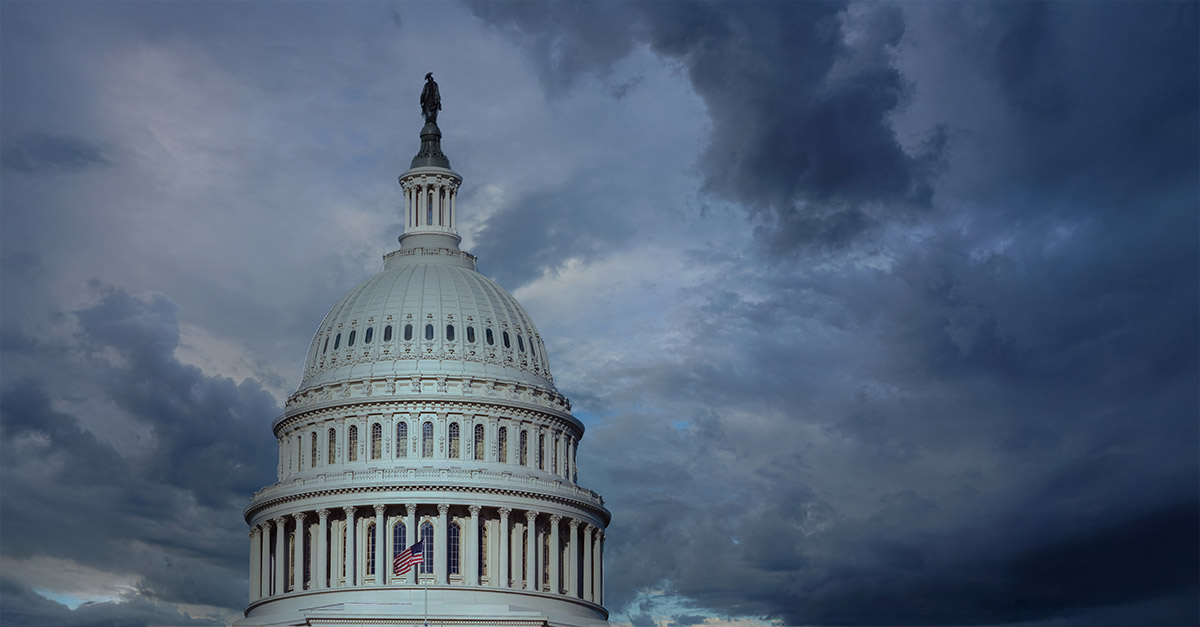This article, written by Roy Edroso and featuring Martie Ross, Kansas City Office Managing Principal and Director of PYA’s Center for Rural Health Advancement, was originally published by Part B News.
Get Ready for 4% Cut: Budget Shutdown Not Likely to Stop Medicare Sequester
There’s an opportunity for Congress to take advantage of the shutdown threat to head off the extra 2% sequestration cut providers face in 2026, but experts advise against getting your hopes up.
As has happened several times since the 1980s, congressional appropriations to fund the government over the upcoming fiscal year, which begins October 1, have fallen far enough behind deadline that there’s a risk that many functions will go unfunded and be shut down until Congress wrangles, and the president signs, new appropriation bills or a continuing resolution (CR) that will temporarily extend current spending until new appropriations can be made.
This impasse is traditionally seen as an opportunity for the party out of power, as well as for factions that have not been able to get their budget issues addressed during regular order, to apply pressure on the majority.
The shutdown would not apply to all government functions. For example, while much of the civilian workforce of the Defense Department would be put on furlough, armed services would remain at full force. A shutdown “just means there’s no discretionary funding available, but programs like Medicare and Social Security are mandatory spending programs, and are not impacted,” says Martie Ross, office managing principal for the PYA consultancy in Kansas City and director of the PYA Center for Rural Health Advancement. “That money has already been appropriated.”
What about the cut?
But the prospect of new budget-related negotiations does raise a question relevant to Medicare providers: Can Congress do something about the looming 2% increase in the sequestration of Medicare physician payments?
In many of the past 12 years, the payments have been automatically trimmed by 2% because federal budgets have gone deep enough into the red to trigger the Budget Control Act of 2011, which requires the sequestration. There’s also a separate sequestration element in the Pay-As-You-Go, or PAYGO Act, which would allow Medicare reimbursement in years when the deficit goes high enough to be sequestered by as much as 4%. The law also stipulates that 4% is as much as Medicare can be cut, so the total 2026 sequester would amount to 4% rather than 6% (PBN 7/21/25).
The One Big Beautiful Budget Act (OBBBA) passed in the summer increased the deficit sufficiently that the PAYGO sequester will kick in. So have previous budget bills. But the PAYGO sequester has never gone into effect. Invariably, whenever a bill has increased the deficit enough to require the PAYGO sequester, Congress has managed to kick the can down the road with supplemental legislation. In 2021, for example, the American Rescue Plan Act blew a PAYGO[1]triggering hole in the deficit but Congress later passed the Protecting Medicare and American Farmers from Sequester Cuts Act to waive it.
Bills to waive PAYGO require 60 votes to pass in the Senate. Congress might use reconciliation, a more limited kind of spending legislation, to waive PAYGO with just a simple Senate majority. But the increasingly bitter partisan division in Congress adds a new degree of difficulty to getting that done, observes Claire Ernst, director, government relations and public policy for Hooper, Lundy & Bookman, Washington, D.C.
“The nature of reconciliation is politically contentious,” Ernst says. “So it’s hard to come to an agreement on something that needs to be passed by the normal majority.”
Ross notes that “there has been some noise” on Capitol Hill about using reconciliation, but “the folks who are proposing that want to cut Medicaid even further by, for example, eliminating the expansion of Medicaid from the Affordable Care Act,” as was proposed by Senator Rick Scott (R-Fla.) during the run-up to the OBBBA. That reduces chances of passage.
Waiver harder than ever
As Congress deliberates, no word has leaked on the possibility of a waiver in any continuing resolution under consideration. “It is still truly the smoky back-room type of work going on” in Congress, Ross says. “Right now, congressional leaders are focused on a stopgap funding measure to prevent a government shutdown at the end of the month. At this point, there’s no consensus around how long such stopgap funding would remain in place, and whether it would include changes to FY 2025 funding levels.”
House Minority Leader Hakeem Jeffries (D-N.Y.) has said that “health care is a clear red line….We will not support a partisan Republican spending bill that rips health care away from the American people.” But he is thought to have been talking about Medicaid and ACA cuts such as what Scott had proposed. And a Democratic statement on the Medicare sequester has not been forthcoming.
Part B News will monitor the situation and report any new developments on the sequestration front, but as of now, look for the deficit to eat twice as much reimbursement as it currently does in 2026.
A flagship publication of DecisionHealth, Part B News helps physicians, compliance officers, and other healthcare experts make decisions on issues related to their business operations. The article is available by subscription.
PYA’s experts understand the complex web of Medicare reimbursement and are adept at helping healthcare organizations receive reimbursement for services they provide.
Related FAQ:
Q: Will a government shutdown stop Medicare payments?
A: No. Medicare and Social Security are mandatory spending programs, so they are not impacted by federal shutdowns. Payments continue because funding has already been appropriated.
Q: What Medicare cuts are expected in 2026?
A: Providers face a 4% Medicare sequester cut in 2026 due to PAYGO requirements, double the current 2% reduction.
Q: Has the PAYGO sequester ever taken effect before?
A: No. While PAYGO has been triggered by deficits in the past, Congress has always passed supplemental legislation to waive the cuts.
Q: Can Congress prevent the 2026 Medicare sequester cut?
A: It’s possible, but increasingly difficult. Waiving PAYGO requires 60 Senate votes or reconciliation, both of which face steep partisan challenges.
Q: How might reconciliation affect Medicare sequestration?
A: Some proposals to use reconciliation have tied PAYGO waivers to Medicaid cuts, making bipartisan agreement harder to achieve.
Q: What should healthcare providers do to prepare for Medicare payment cuts?
A: Providers should anticipate the full 4% reduction in 2026 and work with experts like PYA to plan reimbursement strategies and manage compliance risks.





